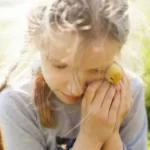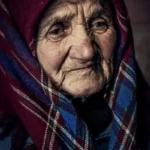The hidden curriculum refers to the unwritten, unspoken, and often unintentional lessons that students learn in school, which go beyond the formal curriculum. These lessons are embedded in the school’s culture, practices, and interactions, and can have a profound impact on primary school children. In this article, we will explore the effects of the hidden curriculum on primary school children and its implications for their socialization and development.
1. Socialization and Values
The hidden curriculum plays a crucial role in shaping children’s socialization and values. Through various interactions and experiences in the school environment, children learn important social skills, norms, and values that are not explicitly taught in the classroom. For example, they learn about cooperation, respect for authority, and the importance of punctuality. These lessons contribute to the development of their social identity and help them navigate the broader society.
However, the hidden curriculum is not always neutral or inclusive. It can reinforce existing social hierarchies and perpetuate stereotypes and biases. For instance, children may learn gender roles and expectations that limit their choices and opportunities. It is essential for educators to be aware of these potential biases and actively work towards creating an inclusive and equitable hidden curriculum.
2. Emotional and Behavioral Development
The hidden curriculum also has an impact on children’s emotional and behavioral development. School environments that prioritize discipline and conformity may inadvertently stifle children’s creativity, self-expression, and critical thinking skills. This can lead to feelings of frustration, anxiety, and disengagement among students.
On the other hand, schools that foster a positive and supportive hidden curriculum can enhance children’s emotional well-being and promote healthy social interactions. When students feel valued, respected, and included, they are more likely to develop positive relationships with their peers and teachers, leading to better overall mental health and academic achievement.
3. Cultural and Social Capital
The hidden curriculum also plays a role in the transmission of cultural and social capital. Cultural capital refers to the knowledge, skills, and cultural resources that individuals acquire through their socialization and upbringing. Social capital, on the other hand, refers to the networks and relationships that individuals develop, which can provide them with access to resources and opportunities.
Primary schools that have a strong hidden curriculum can either reinforce or challenge existing social inequalities. For example, schools that prioritize the teaching of dominant cultural norms and values may inadvertently disadvantage students from diverse cultural backgrounds. Conversely, schools that promote cultural diversity and inclusivity can help students develop a broader understanding and appreciation of different cultures, fostering social cohesion and reducing prejudice.
4. Critical Thinking and Citizenship
The hidden curriculum can also influence children’s development of critical thinking skills and their understanding of citizenship. Schools that encourage independent thinking, inquiry-based learning, and democratic participation in decision-making processes help children develop the skills necessary for active citizenship in a democratic society.
However, if the hidden curriculum promotes passive learning, rote memorization, and a lack of critical questioning, it can hinder children’s ability to think critically and engage actively in democratic processes. It is crucial for schools to prioritize the development of critical thinking skills and provide opportunities for students to voice their opinions and participate in decision-making.
Conclusion
The hidden curriculum in primary schools has a significant impact on children’s socialization, values, emotional and behavioral development, cultural and social capital, as well as their critical thinking skills and understanding of citizenship. It is essential for educators to be mindful of the hidden curriculum and its potential biases, ensuring that it promotes inclusivity, equity, and the holistic development of all primary school children.














